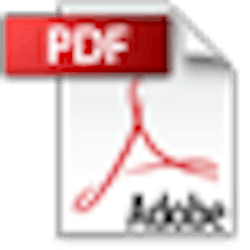Engineering Essentials: Lubrication Tips (Part 1)
This file type includes high resolution graphics and schematics when applicable.
Machinery efficiency
Q: To what extent do lubricants improve machinery efficiency and reduce power requirements?
A: Lubricants reduce wear, protect against corrosion, remove heat, and most importantly, reduce friction. By reducing friction in a machine element, a lubricant increases machine efficiency and reduces energy costs.
Most machines use a lubricant that is already reasonably suited to the application. In such cases, switching to a more suitable lubricant can only increase efficiency by several percent, though exceptional cases may yield up to 15%. The lubricant’s contribution becomes more important with extreme speed, load, or operating temperature.
Q: What types of lubricants are best suited for improving machinery efficiency?
A: It depends on how well the lubricant characteristics match the application. Each bearing, gear, coupling, or slideway has its own operating parameters that affect lubricant selection.
The two most important lubricant characteristics to consider are base viscosity and chemistry.
Base viscosity. Using oil with the wrong viscosity increases friction between machine parts, causing them to run less efficiently.
A Stribeck curve, Figure 1, shows the effect of three factors — speed, load, and lubricant viscosity — on the friction between moving parts. Although this curve can’t be easily used to select an optimum viscosity for an application, it shows the effect of viscosity on efficiency. For highest efficiency, viscosity should match the point of lowest friction (A).
If viscosity is too low for the application, friction increases (to the left of point A), reducing efficiency and increasing power requirements. If viscosity is too high, friction again increases (to the right). This also reduces efficiency, but to a lesser degree than with low viscosity. By changing the lubricant viscosity and monitoring equipment efficiency (current draw or temperature), you can determine what region of the curve you are operating in and modify the lubricant viscosity to optimize efficiency.
Chemistry. Although lubricant viscosity influences efficiency the most, chemistry also plays a major role. The amount of lubricant, type of base oil (mineral or synthetic), type of thickener, amount and type of additives, and, in the case of grease, the NLGI grade, all affect efficiency and power requirements. Here are some examples:
• Mineral-based oils are the most common type of gear lubricants. However, gear configurations with high degrees of sliding, such as worm gears, operate up to 30% more efficiently with synthetic (polyglycol) based gear oils, which reduces power requirements, Figure 2.
• When sintered (powder metal) bearings are impregnated with synthetic (ester and PAO) based oils, friction is reduced over a wide speed range compared to mineral and silicone oils, Figure 3. For low speed, highly loaded sintered bearings, synthetic oils reduce friction as much as 50%. This increases efficiency, which is especially important for shaftsupport bearings in miniature horsepower motors.
• Chain oil not only lubricates, but also cools the chain and washes away contaminants. For this reason, chain efficiency is affected by lubrication frequency as well as lubricant type. Applying small amounts of lubricant at frequent intervals greatly improves chain efficiency.
Bearing performance. A quick way to determine if a ball bearing and lubricant combination is operating efficiently is to monitor the bearing temperature. Power loss in the bearing is proportional to the rise in bearing temperature over ambient. For example, a spindle bearing typically operates at 20 C above ambient. If the temperature difference increases to 30 C (due to improper lubricant), power consumption increases 50%.

